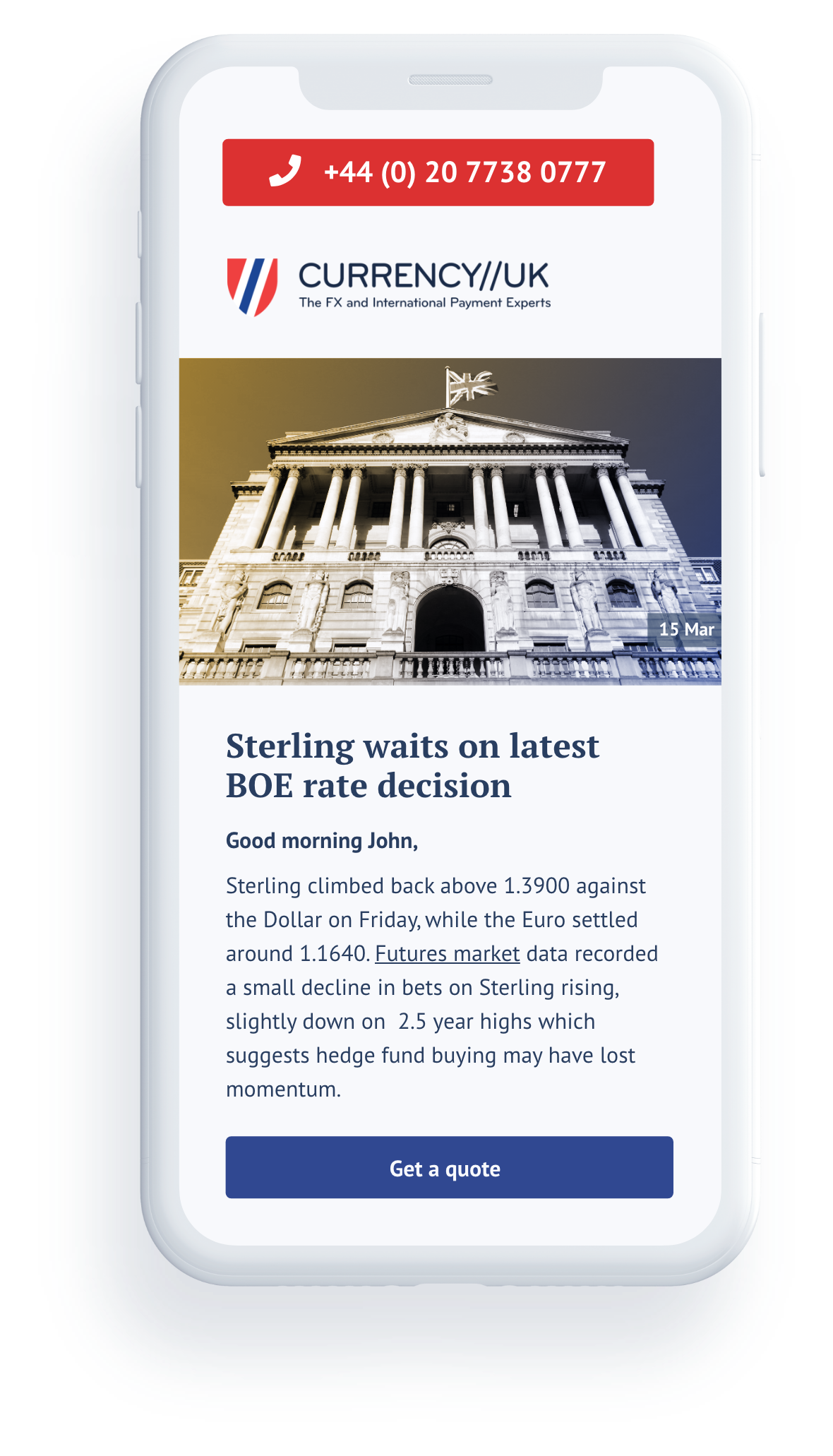Measuring FX risks within your business

We hear a lot of talk about FX risk and protecting profits against fluctuations in exchange rates, but understanding when your bottom line may be at risk is equally as important. By not recognising the risks early enough and acting while in a position of strength, you will continue to leave your business in a vulnerable position.
Businesses are moving away from attempting to predict the way the exchange rate will move or simply dealing with the rate they have when they need to make a transaction. Instead, locking in profits and protecting cash flows is the order of the day, as businesses seek confidence in a time of frequent market volatility.
So starting at the beginning, when is your business at risk from fluctuations in exchange rates? Well, if you deal in multiple currencies, use international suppliers and buy and sell in overseas markets, you are at risk the vast majority of the time. The use of forward contracts can significantly reduce these risks. This is great, but to be able to create an effective FX strategy it is crucial to know which parts of the business are most at risk as well as knowing how to combat them. What determines this varies from business to business but by considering, which currency pairs are being traded, how much of a buffer you have protecting your profit margin and lead times in the manufacturing or delivery process, you will get closer to understanding where the risks lie.
What currencies are involved?
Any currency pair can be affected by sudden movements in the market but it is important to consider where you are most vulnerable within your business. The simplest way to determine this is to look at which currency is the primary currency for your business and which other currency you exchange with it most frequently.
It may be that 90% of your business is done in Euros and mainly traded with the Pound. Naturally, the EUR/GBP pair is where your vulnerability lies as it is responsible for the vast majority of your costs and profits. However, whilst this can be used as a starting point, there is much more to consider than just the amount of your business that is going through one particular currency.
There are some currencies that are considered to be safer than others such as the US dollar, Norwegian krone and Singapore dollar. Whilst on the flip side there are certain currency pairs that are more volatile like GBP/AUD, AUD/USD and CAD/JPY. These currencies that are more volatile should be considered a greater risk and therefore prepared for effectively.
What timeframes exist within my business?
The most basic form of FX risk occurs when the exchange rate changes during the time between the business transaction being confirmed and the payment for the product or service being settled. The amount of risk involved depends on the size of the transaction and the amount of time between the transaction and the payment being settled. The thought is that the more time there is, the greater the chance of significant movement in the market. This is true, however as we have seen over the last 12 months or so with the effect of political uncertainty in the UK, exchange rates can soar or fall dramatically in no time at all.
If a business does have long lead times on products or materials their exposure may be greater. One of our clients set up his own giftware and promotional goods business buying products from China and selling them in the UK & Europe. A problem with costing goods from China however, is the lead time which can be as much as 6 months. As a result, Mr Export has to pay for goods at today’s exchange rate despite placing the order when the rate was at a different value. The items ordered back then now cost him more as the Pound weakens and the exchange rate changes which ultimately leaves his business at risk.
After consultation with Currency//UK, we were able to offer Mr Export a simple and effective hedging solution for his business. Hedging on individual supply orders meant one price for each order and one exchange rate to write on invoices which could then be filed until the goods arrive. The contracts were structured with a flexible window of time, to allow for delayed start dates and the client paid a small deposit to secure the exchange rate. The client was then able to arrange sales, place orders with suppliers, eliminate all exchange risk on orders with his suppliers and move straight onto the next sale knowing the cost of the previous one was locked in. Over the next 2 years of working with Currency//UK, Mr Export’s orders from the Chinese suppliers grew 400% year on year and he saved money on what his bank was charging him for international transactions.
Is my FX strategy a success?
There is a strong case for benchmarks, but, very importantly, they have to be realistic benchmarks. A classic FX risk management error is to measure success by whether the hedge made money rather than if it protected profits.
There is also a consensus that a hedge is unsuccessful if the rate moves even further in your favour meaning you have a weaker rate locked in. There are ways around this such as drawing down early or only hedging a percentage of your currency for the year, but if the rate moves even more in your favour the hedge should still be considered a success. Not only have you protected our profits, but you also have more margin in hand.
Not having an FX strategy leaves businesses unprepared for volatile currency movements resulting in unexpected costs, lower profit margins and limits to cash flow.
To find out how a forward contract could benefit your business and begin reducing the risk of exchange rate fluctuations speak to one of our FX experts by calling +44 (0) 20 7738 0777 or request a call back via our website.

